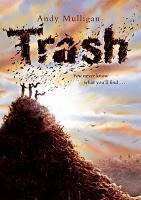 Mad cow disease, an immortal lawn gnome and a punk angel with a hatred of snow globes. All the makings of a Viking epic…
Mad cow disease, an immortal lawn gnome and a punk angel with a hatred of snow globes. All the makings of a Viking epic…
This book is a deranged ride across America that combines a desperate search for a cure with a philosophical crisis.
Cameron is a Texas teen outcast drifting without a cause until he is diagnosed with Bovine spongiform encephalopathy – mad cow disease – and he is forced to flee the hospital and those who care about him in order to find a cure with his companions: Gonzo, a hypochondriac Little Person, and Dulcie, an angel who has involved herself personally with Cameron’s plight.
Their goals? To find the elusive Dr. X before a hole in space time destroys the universe and to find a cure for Cameron on the way. Not the easiest of quests when you are being pursued by police, giants made of fire and an armoured man with plans to end everything.
The writing in Going Bovine is obscure in its design; the style changes as the book gains confidence. It starts off a little confused and unsure, but within a few chapters, the author has latched onto the storyline and lets it evolve naturally. And it does evolve, as do the characters.
The characters put on a brave face throughout the novel but underneath is a pretty serious message: live your life the best you can, you don’t know how long you have.
There’s plenty in Going Bovine to keep you entertained and confused: a snow globe empire conspiracy; flashes of alternate realities; a cult of bowling-obsessed happiness junkies; and a lawn gnome who believes he is a Norse god.
This is really a love it or leave it kind of book; I loved it, and, at nearly five hundred pages, there was plenty to love. But there really is a lot in here that is a matter of taste; there is some sex and alternate sexualities, some theological questioning, and plenty of reflection on the nature of television and the human condition.
As one of the few stand-alone novels I’ve read this year Going Bovine stands strong in its message and characters. And one that I thoroughly enjoyed reading.
Going Bovine – Libba Bray
Published: September 28, 2010 by Delacorte Books for Young Readers
Paperback – 496 Pages
ISBN: 978-0-385-73398-4






























